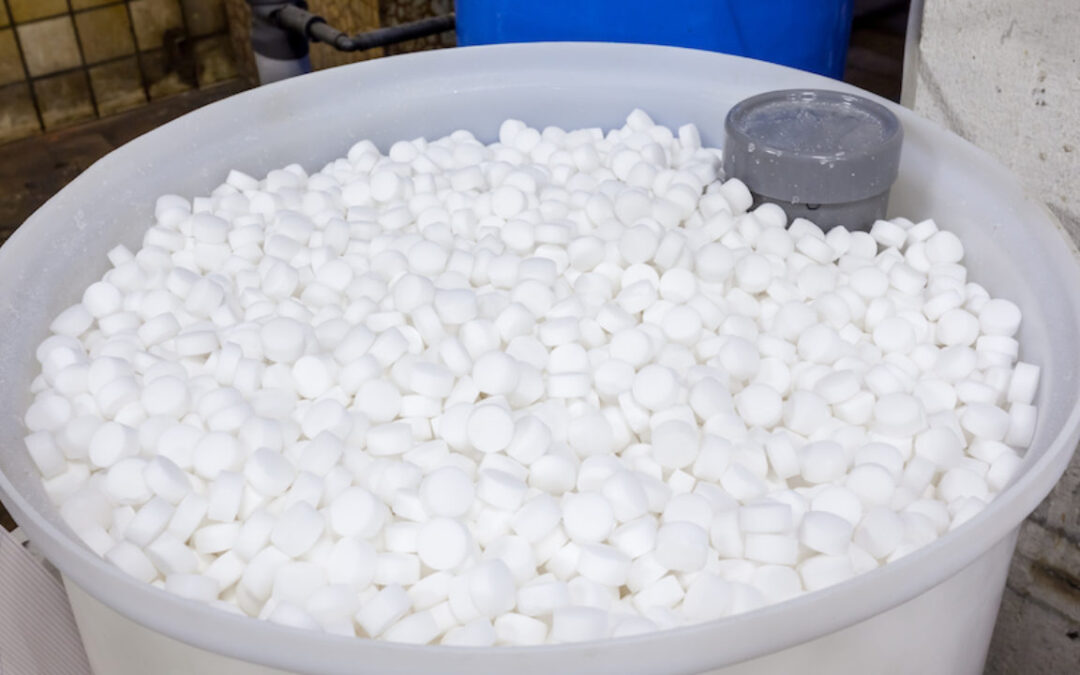Water softening is a crucial process in managing water quality for various applications, from household use to industrial processes.
It primarily addresses the challenge posed by hard water—water that contains high levels of minerals, particularly calcium and magnesium. These minerals can cause a myriad of problems, including scaling inside pipes, reduced effectiveness of soap and detergent, and the deterioration of water appliances.
The role of salt in water softening is pivotal, as it drives the ion exchange process that removes these hardness minerals from the water, transforming hard water into soft water. This article delves into the water softening process and elucidates how salt is instrumental in this transformation.
Understanding Hard Water
Hard water naturally occurs when water percolates through deposits of limestone and chalk, which are rich in calcium and magnesium carbonates. The presence of these minerals in water characterizes its “hardness.”
While hard water is not harmful to health, it poses significant challenges in domestic and industrial settings. For instance, it can lead to the buildup of scale within pipes and water heaters, decreasing their efficiency and lifespan. Furthermore, hard water can reduce the lathering ability of soap, leading to increased usage of detergents and soaps, which has environmental and economic implications.
The Water Softening Process
Water softening primarily employs a method known as ion exchange to remove the minerals that cause water hardness. This process is facilitated by a water softener unit, which contains resin beads charged with sodium ions.
As hard water flows through the water softener tank, the calcium and magnesium ions in the water are attracted to and bind with the resin beads. In exchange, the sodium ions are released into the water. This exchange of ions effectively removes the hardness minerals from the water, resulting in soft water.

How does a water softener work?
The Crucial Role of Salt
Salt, specifically in the form of sodium chloride or potassium chloride, plays a vital role in regenerating the resin beads in a water softener.
Over time, the resin beads become saturated with calcium and magnesium ions and must be regenerated to continue softening water effectively.
Salt is used in the regeneration process, where a concentrated brine solution is flushed through the resin tank.
The high concentration of sodium ions in the brine solution displaces the calcium and magnesium ions, restoring the resin beads to their original sodium-charged state.
The displaced calcium and magnesium ions are then flushed out of the system with the excess brine solution.
Salt Choices and Considerations
When it comes to selecting salt for water softening, there are a few options available, each with its advantages and considerations. The most common types of salt used are rock salt, solar salt, and evaporated salt. Rock salt is the least expensive but contains more insoluble impurities that can reduce the efficiency of the softening unit. Solar salt, obtained through the evaporation of seawater, is more soluble than rock salt. Evaporated salt, the purest form of salt, offers the highest solubility, making it the most efficient option for regenerating resin beads but at a higher cost.
Environmental and Health Implications
The use of salt in water softening raises environmental and health considerations. The discharge of brine solution into the environment can contribute to salinity and negatively impact aquatic ecosystems.
Additionally, the increase in sodium levels in softened water is a health consideration for individuals on low-sodium diets. Alternatives to traditional salt-based softeners, such as salt-free water conditioners, offer solutions to these concerns by using different technologies to alter the properties of hardness minerals without the need for salt.
Conclusion
Salt plays an indispensable role in the water softening process, enabling the ion exchange that transforms hard water into soft water. By understanding the intricacies of this process and the considerations involved in selecting and using salt, consumers can make informed decisions that balance water quality needs with environmental and health considerations.
As technology advances, alternative solutions to water softening continue to emerge, offering promising avenues for managing water hardness without the drawbacks associated with traditional salt-based softeners.
We hope you found the information above useful. Leave a comment below, or contact us if you have any questions.
